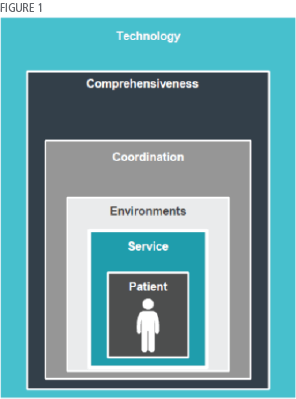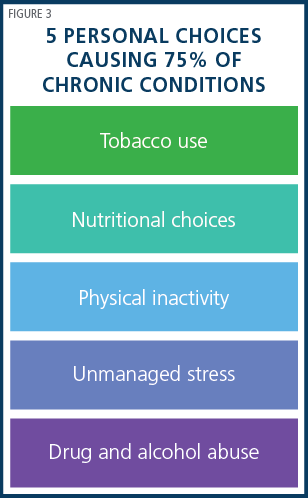B.E. Smith Team | May 01, 2018
Four Critical Lessons from the Becker’s Hospital Review Annual Conference
Healthcare executives were treated to a broad mix of informative presentations on a host of leading issues at the 2018 Becker’s Hospital Review Annual Meeting. From patient care and population health to leadership development strategies, healthcare thought leaders and experts shared their experiences and best practices with colleagues. B.E. Smith attended and spoke at the conference, and is pleased to provide this report highlighting four primary themes at this year’s event.
Patient Centricity and Value Transparency
Patient engagement has evolved into the broader concept of “patient experience,” driven in large measure by rising consumerist behavior. The session “The Health System of the Future: A Model,” placed this theme within strategic context. Dr. Scott Cullen, Principal at ECG Management Consultants, discussed how today’s primary competitive drivers are “patient centricity and value transparency.” Dr. Cullen cited a variety of statistics demonstrating the critical success factors of “cost and convenience.” In one study, patients significantly valued access and convenience over credentials or continuity when selecting a provider. Another revealed that 19% of patients would switch PCPs if they could save $500 to $1,000.
 Addressing this fluid, consumer-driven environment entails understanding true patient centricity. As Figure 1 summarizes, the patient is surrounded by convenient services – including self-services – delivered in many settings, coordinated by caregiver teams. The aim is comprehensive care from “wellness to hospice,” and the entire service stack is supported by a range of technologies.
Addressing this fluid, consumer-driven environment entails understanding true patient centricity. As Figure 1 summarizes, the patient is surrounded by convenient services – including self-services – delivered in many settings, coordinated by caregiver teams. The aim is comprehensive care from “wellness to hospice,” and the entire service stack is supported by a range of technologies.
In “Transforming Experience: Structure, Strategy and Sustainment,” Northwell Health’s Sven Gierlinger, Chief Experience Officer, and Agnes Barden, Vice President of Patient Experience, echoed the crucial nature of consumer focus. Hospitals need “new thinking, new culture, and new practices” because “we are now in the customer service business.” Gierlinger and Barden described how Northwell Health’s governing structure for end-toend patient experience, centered on an Office of Patient & Customer Experience. The organization also performed “deep dive interviews” with discharged patients. The upshot was development of a “relationship-centered communication strategy” for caregivers and staff involving training, role play, and coaching.
In the session “Differentiate your PX Strategy,” Michael Pizzano, Vice President at CareOne Management and Advisory Board Member at Rutgers University, focused on the “empowered consumer.” Pizzano stated that “patients are aware of the power they possess … when choosing hospitals and interacting with healthcare brands.” However, “delighting patients with a seamless experience remains a challenge.” His offered two prescriptions:
- Break down silos by soliciting empathy. Tell the full experience story to change culture.
- Quickly show tangible business value from customer-centricity.
Finally, John Couris, President and Chief Executive Officer at Tampa General Hospital, reminded conference attendees that consumer-directed health plans and similar programs now enroll 26 million individuals. Couris cited a report in his session, “The New Core: Building Relationships with Patient Consumers,” showing:
- Two-thirds of executives believe insights into patient behavior are critical.
- Less than one-fourth feel they have the means to gather and analyze meaningful patient data.
He urged organizations to look at firms like American Express to learn techniques of consumer understanding. Couris then suggested anticipating and addressing the specific needs of four core customer segments as shown in Figure 2. One challenge is to estimate their varying rates of adoption of new care paradigms. “You don’t want to get there too fast as you might be the only one there, including the patients.”

Abundant Opportunity in Population Health Management
Population Health Management (PHM) is one of the principal tools to achieve not only patientcentricity, but true value-based care. B.E. Smith leadership surveys continually show that half of healthcare organizations have population health strategies in place or under development. Several sessions engaged PHM creatively. Doug Ribley, Senior Vice President of Wellness Services at Cleveland Clinic’s Akron General Hospital, offered perspectives in his session “Health & Wellness/ Population Health.” Since preventing chronic disease is a hallmark of PHM, Ribley identified the five personal choices causing 75% of chronic conditions. (See Figure 3.)
 Ribley explained that all organizations will need to offer health and wellness programs because “physical activity, nutrition, and health education will be the cost-effective solution.” Ribley described Akron’s comprehensive “health and wellness outpatient delivery model,” which features a “medically supervised health and fitness facility focused on prevention and treatment of lifestyle related disease.” The facility is more than a health club. Members average 49 years old, and half have never been a member of a health club and are considered high risk. The center has become a “community hub serving as a meaningful population health tool.”
Ribley explained that all organizations will need to offer health and wellness programs because “physical activity, nutrition, and health education will be the cost-effective solution.” Ribley described Akron’s comprehensive “health and wellness outpatient delivery model,” which features a “medically supervised health and fitness facility focused on prevention and treatment of lifestyle related disease.” The facility is more than a health club. Members average 49 years old, and half have never been a member of a health club and are considered high risk. The center has become a “community hub serving as a meaningful population health tool.”
Two presentations highlighted the role of inquiry in developing PHM strategy. In “Population Health: Defining Outcomes by Asking the Right Questions,” Kearny County Hospital’s Chief Executive Officer, Benjamin Anderson, and intern, Sarah Weber, explored a common mistake organizations take when framing PHM programs. Anderson and Weber observed that many healthcare organizations traditionally focus programs internally instead of externally. These organizations ask patients, “How did we do?” rather than “How are you?” Kearny County Hospital took its investigation to heart with a door-to-door, county-wide survey seeking illumination of two key issues. First, what is wellness to each individual? Second, what prevents its achievement? Two major PHM priorities emerged from the data, after-hours non-emergency care and weight management coaching.
Dennis Shelby, Chief Executive Officer at Wilson Medical Center, and Doug Spear, Executive Director at Shawnee Mission Health, explored the importance of community surveys, particularly doorto- door surveys, in PHM programs. The session “How to Thrive: Population Health Strategies to Improve Community Health and Wellness,” reinforced the value of door-to-door surveys. Shawnee Mission Health partnered with area health departments to expand its data set substantially, enabling insights beyond what is normally derived from “widely available community health data.”
Finally, the session “New Approaches for Bending the Cost Curve: Proven Models for Delivering Whole Person Care,” put forward a comprehensive approach to improving PHM by involving a whole person care (WPC) model. Dr. Jeffrey Arnold, Chief Medical Officer at Santa Clara Valley Health System explained how his organization partnered with several agencies and conducted 24 pilot programs targeting five populations:
- High utilizers with repeated incidents of avoidable ED and other facility use
- High utilizers with two or more chronic conditions
- Individuals with mental health or substance use disorders
- Homeless
- Individuals recently released from institutions
Dr. Arnold shared three valuable lessons from the pilot programs:
- Must “meet patients where they are” – across the continuum
- Treat WPC like “outpatient intensive care”
- Considerable face-to-face patient activity is needed along with “weekly multidisciplinary case conferences”
Leadership Development is Complex and Essential
Skill requirements for current and future leaders are perennial topics at the annual Becker’s Hospital Review Conference. This year several sessions offered creative advice on taking leadership development programs to the next level. Bryan Bennett, Executive Director at Healthcare Center of Excellence and Adjunct Professor at Northwestern, urged healthcare leaders to develop unique development programs in his session, “Personalized Leadership Journey.” According to Bennett, the approach is akin to “personalized medicine for leaders.” He began the session by contrasting the key myths and truths about leadership as shown in Figure 4.

The session offered 5 essential elements of a personalized development plan:
- Capabilities focus
- Individual customization
- Regular reflection and review
- Coaching feedback and holding mentees accountable
- Continuous improvement
In the session “Physician Leadership and Development: A Conceptual Model for Teaching Physicians and ACPs to be Effective Leaders,” Atrium Health’s Dr. Jaspal Singh and Jennifer Terry, Vice President of Children’s Services, directed attention to the important subject of developing physician leaders. Mirroring industry trends, Atrium faced a “significant increase in the number of physician/ACP leadership roles due to system growth and an increased emphasis on clinical leadership driving organizational strategy.” Wanting to develop a robust development model, Atrium debated numerous questions, including how clinical leaders balance specialty versus system-wide initiatives and which leadership traits can be developed.

Role evolution demanded definition of required competencies, and Atrium chose the framework shown in Figure 5. It delineates desirable skills under four chief headings:
- masterful execution
- way with people
- compelling vision
- self-awareness
The skills are amenable to improvement through “asynchronous learning platforms,” “optimized coaching” and more.
Execution Strategies for High Performance
While many innovative strategies are spotlighted across the conference, several sessions offered novel approaches to execution – especially ones that break boundaries that impede performance. Change Healthcare’s Thierry Guyader, International Business Development, and John Graham, Product Management, focused on integrated decision-making in the session “Hospital Integrated Command and Operations Centers.” For Change Healthcare, strategy execution began with integrated decision-making and included five specific goals:
- Bring decision makers into one room
- Feed them field information in real time
- Communicate decisions for field execution
- Track progress in real time
- Forecast to adjust plans
A specific way to achieve this state is via a physical command and operations center. Figure 6 shows an example. The center is staffed 24/7, conducts daily huddles viewing the monitors, synchronizes with nursing units, and brings in emergency teams during crises. Tangible execution benefits include faster decisions, fewer last minute variations, better resource utilization, and reduced patient time in hospital.

Another innovation several healthcare organizations have explored is a central office to coordinate strategic execution. It was the focus of the session, “From Idea to Execution: Accelerate Strategy Execution through the Office of Strategy Management” by Atrium Health’s Liz Popwell, Vice President of Strategy, and Jhaymie Heinlein, Director of Strategy Management and Growth. An Office of Strategy Management (OSM) “closes the gap between strategy development and execution and… is typically a new unit at the corporate level.” An OSM plays three fundamental roles:
- Accelerator – focus on performance, alignment, and review with the C-suite
- Facilitator – managing the planning process and communicating strategy outward
- Integrator – working with HR, finance, IT, and others to share practices and “cascade strategy”
Popwell and Heinlein also identified an important fourth emerging role as a “translator” of strategy by establishing a common vocabulary, sharing strategy narratives, and being “myth busters.” Atrium believes as healthcare’s margin for strategic error narrows, initiatives such as an OSM can overcome common planning pitfalls.
Conclusion
Patient centricity, population health management, leadership development, and strategy execution where just some of the complex issues discussed at this year’s annual Becker’s Hospital Review Conference. Equally important, attendees came away with many best practices and strategies that are immediately actionable and will improve not only patient care, but financial and operational performance.
Read More